Halloween Movies Ranked From the Absolute Worst to the Undisputed Best
Halloween has one of the wildest legacies in horror, and we’re going to determine which Michael Myers movies are tricks and which are treats, including Halloween Ends!
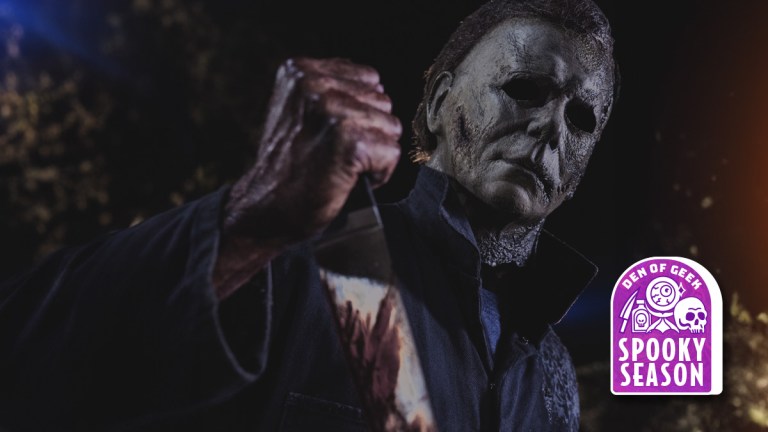
Do you believe in the boogeyman? If you’ve ever watched one of the good Halloween movies, the answer is an unqualified yes! The boogeyman is real and he has a name and a shape: Michael Myers. And for the last 45 years, he’s been cutting a bloody path of carnage across multiplexes everywhere.
It began innocently enough in the hands of director John Carpenter, a then young filmmaker not long out of film school who, along with producer and co-writer Debra Hill, plus some friends, wanted to make a genuinely spooky horror movie that borrowed heavily from chillers like Psycho or The Texas Chainsaw Massacre. Only this time, they brought that kind of terror home to the suburbs. If you watch their first fully formed slasher movie today, you might even be surprised by how little slashing there is. Nevertheless, Michael’s devil eyes have endured, changing with the times but always returning, every few Octobers or so, to claim more victims for his body count.
In that time, we’ve seen his series of movies get rebooted, remade, and rebooted, with different writers and directors making figure-eights with their storytelling choices, and getting lost down narrative cul-de-sacs. In fact, we’re not sure there’s a more convoluted franchise timeline out there—which we helpfully got sorted out right here. Yet at the end of the day, what really matters is which of them are good?
Well, we’ve sat down and figured that out for you, once and for all, in this definitive ranking of the Halloween movies. Trust us.
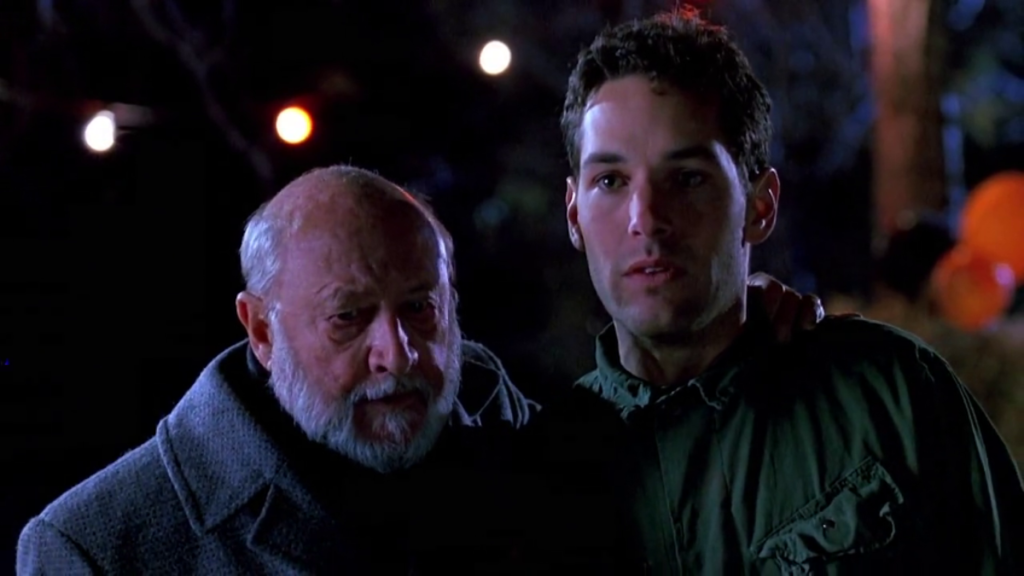
13. Halloween: The Curse of Michael Myers (1995)
There are Halloween movies that are (slightly) more inept than Halloween 6, aka The Curse of Michael Myers. There are also Halloween movies that are visually nastier and more unpleasant than The Curse of Michael Myers. But there isn’t another Halloween movie as stupid as The Curse of Michael Myers. This messy, incoherent jumble of slasher clichés commits the Cardinal Sin of Halloween: It explains why Michael is evil. And its explanation is ludicrously dumb.
In this film, it’s revealed Michael is not actually a psychopathic murderer or a vacant, calculating embodiment of evil (the ambiguity between the two of course always being the appeal). Nay, it turns out he’s a victim; a man tortured by an evil Illuminati-like cult which placed a Druid curse on him as a child, forcing him to kill his family. He doesn’t want to do it. Talk about defanging your monster. Also the film unceremoniously slaughtering the new franchise protagonist, Jamie Lloyd, in the first 10 minutes while refusing to bring back Danielle Harris to the role didn’t do this movie any favors with the fans. But hey look, there’s a young Paul Rudd as an adult Tommy Doyle!
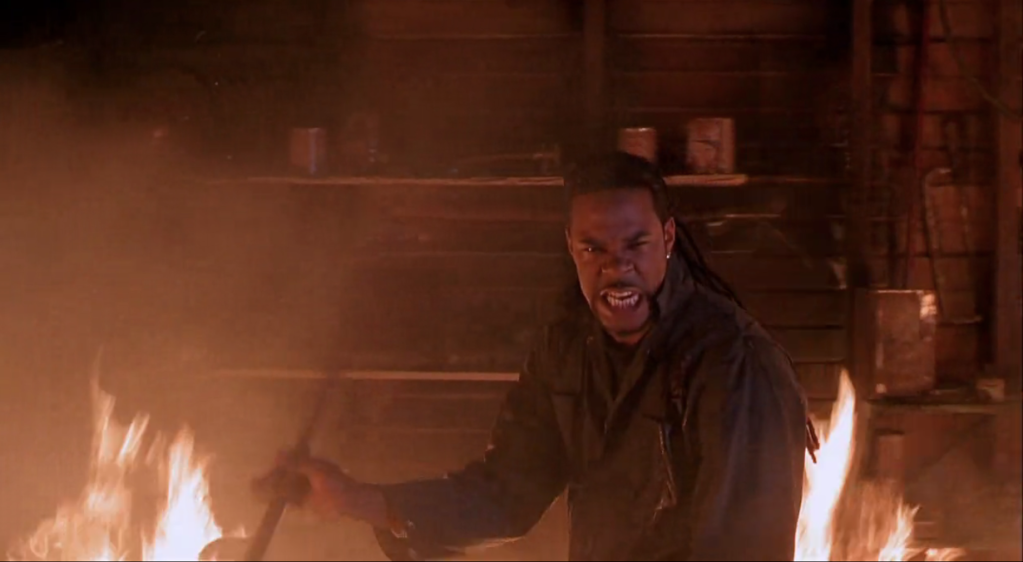
12. Halloween: Resurrection (2002)
One step forward, and 39 steps back. That seems to be the real curse of Michael Myers. Take Halloween: Resurrection, for example. Four years earlier, Jamie Lee Curtis returned in the franchise’s first reboot which offered an ultimately satisfying ending to Michael Myers’ reign, even if that film itself suffered from being a bit of a Scream clone. So Halloween: Resurrection begins by unconvincingly retconning the last one—it was a medic in a Bill Shatner mask that Laurie beheaded!—and then spends 10 minutes killing off Curtis’ Laurie Strode! There’s another Halloween Cardinal Sin you should never, ever break.
Worse, she’s killed to make way for… um, Michael Myers slaughtering the cast of MTV’s Road Rules or something? If you don’t get that reference, then you know exactly how badly this movie has aged along with its gimmicky use of occasional found footage and a vacuous cast of red meat. You’re not supposed to cheer for Michael, that’s Jason or Freddy’s shtick. But how could you not egg him on as he slashes his way through a reality TV series set in his house? Resurrection only finishes one rung above last place because of the camp classic line readings from Busta Rhymes, who saves the day while shouting “Trick ‘r treat, motherfucker!” and then “Hey Mikey, Happy Fucking Halloween!”
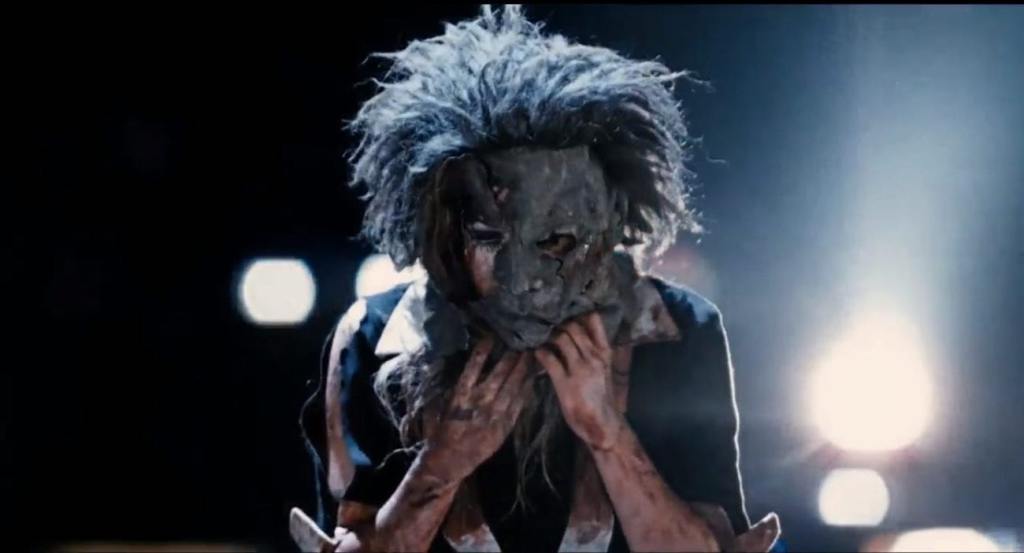
11. Halloween II (2009)
There is a good movie buried somewhere in Rob Zombie’s Halloween II. It follows Danielle Harris—the self-proclaimed “Halloween Girl”—as Annie. She’s the first non-Strode relative to survive a Myers encounter. A year after being brutally attacked, she’s become an introverted shut-in, a ghost of herself, and forced to live with a wonderful Brad Dourif as her father and an annoying friend who’s spiraling out of control named Laurie. That isn’t the movie we get though. It’s a subplot where a less-interested Zombie returns to transform the ostensible heroine Laurie Strode (Scout Taylor-Compton) into another victim of his trashy metal aesthetic. Supposedly this is how she copes with the events of the last movie, but it doesn’t take.
However, even that is a subplot, too, in a movie that bafflingly becomes most preoccupied by weird music video imagery dancing inside Michael Myers’ head. There, he imagines himself as still an eight-year-old boy talking with the ghost of his mother (Sheri Moon Zombie awkwardly shoehorned in here while wearing a white sheet) and eating dogs raw in the real world. Truthfully, the movie’s a mess with a lot of Zombie’s familiar ruthlessness, but little of his ingenuity. So it’s just ugly. It even squanders Malcolm McDowell’s initially intriguing deconstruction of Dr. Loomis, turning the character into a caricature.
Still, there are a few elements that work, like Annie and her painful death scene with Laurie, and the whole ending in which Zombie makes a daring but satisfying choice in how he’ll resolve Laurie’s trauma and the whole nasty passion play of the Myers clan. Also the first 15 minutes, scored to “Nights of White Satin,” is as grimly effective a slasher scene as you’ll see in a 2000s horror. But isn’t that damning with faint praise?
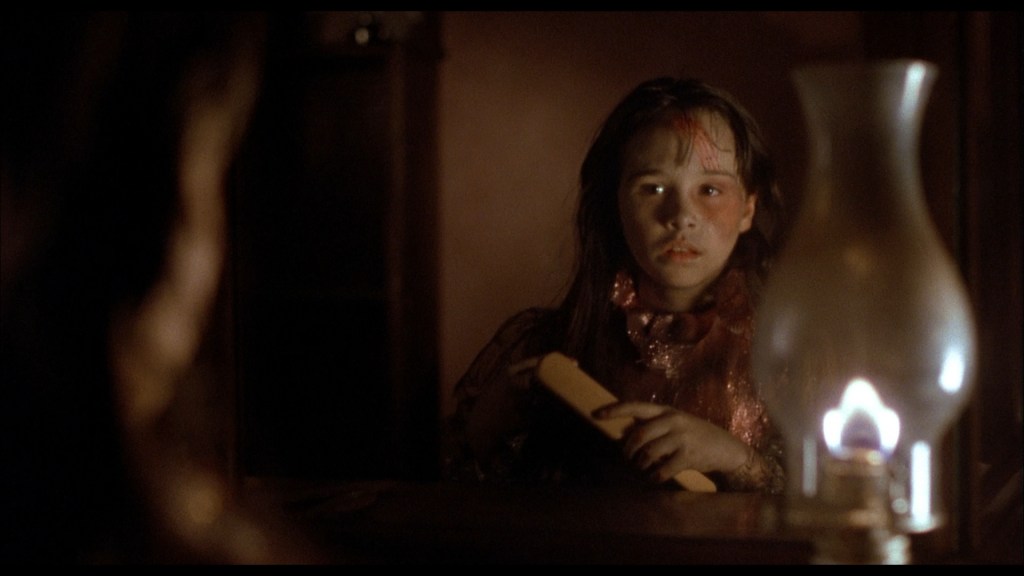
10. Halloween 5: The Revenge of Michael Myers (1989)
After Halloween 4 succeeded at doing the improbable by bringing Michael Myers back from the dead in a fun way, at least for younger audiences, and all without John Carpenter or Jamie Lee Curtis, Halloween 5 came out one year later to ruin all that. It was the beginning of a now very familiar trend with this series. The last movie ended with a tantalizing cliffhanger, as sweet little Jamie Lloyd (Danielle Harris) had been possessed by the evil spirit of Michael Myers since her Uncle Mikey was dead and burning in hell. Well, Halloween 5 takes that all back by revealing Jamie was just being precocious when she stabbed her foster mother in the bath (kids, amirite?), and Michael’s still here to do his own bit of the stabby, stabby.
When I was younger, I was annoyed that the film also killed off Rachel (Ellie Cornell) in the first half hour. Rachel had been Jamie’s older foster sister and protector in the last movie, and a convincing enough stand-in for the absent Jamie Lee. As an adult, it’s easier to understand these exhausted franchises need new surprises, yet the film fails to create an interesting teen protagonist to replace Rachel; it instead settles for the paper thin Tina (Wendy Kaplan) to kind of just be there. Yet Jamie Lloyd is still a a compelling lead, and her final confrontation with her uncle while she hides in the coffin he built for her is genuinely unnerving. Plus, Donald Pleasence really gets to go ham in the scene where he beats Michael with a stick. It just makes makes him angry.
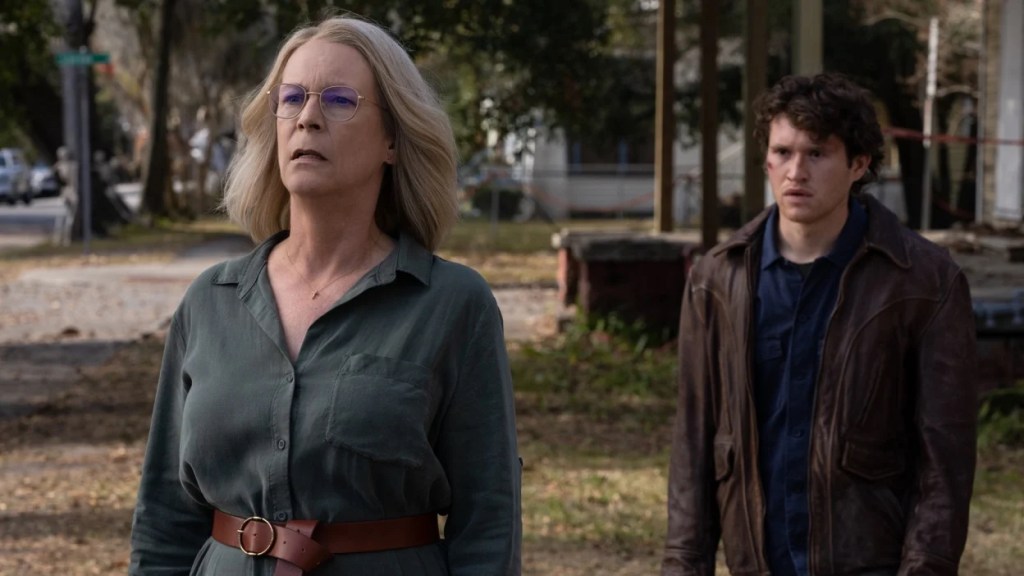
9. Halloween Ends (2022)
In retrospect, David Gordon Green seemed to leave everything he wanted to say about Halloween on the field in his 2018 film. One of that movie’s few weaknesses, in fact, is it didn’t include a final shot of Michael succumbing to the flames after he fell into a strap sprang on him by three generations of Strode women. If only he had. Because two movies later, it’s clear that Green and his bevy of co-writers, including Danny McBride, never found a complete thought worth justifying turning their revival into a trilogy. And that’s most apparent in the third and most wanting installment of their Haddonfield cycle, Halloween Ends.
There is a a kernel of a good idea here, albeit one that was always doomed to disappoint longtime fans of the franchise: What is the true legacy of evil? Michael Myers may be evil incarnate, but his impact extends beyond just his list of victims. And conceptually, there is something to be said about doing an entire film structured around a Haddonfield kid who never met Michael, Corey Cunningham (Rohan Campbell), still becoming defined and corrupted by that evil Shape’s shadow. Hence the film’s brutally effective opening sequence where, scared to death by the idea of Michael Myers, Corey accidentally kills a kid on Halloween night. He is forever after a pariah in his community… until he becomes just like Mike.
It’s a great idea that is arguably too “elevated” for a slasher movie, and Halloween Ends never reconciles with that skepticism by having Myers be a literal character inexplicably living in a sewer for the year-plus two-thirds of the movie takes place during. He then inexplicably comes out of his hiding hole for a limp retread of Halloween 2018’s final showdown with Laurie Strode. The fact that the movie cannot commit to Corey being its main hero/villain, and ends by going through the motions, speaks to the film’s lack of conviction. The film was also marketed as a Michael Myers movie, which belies how dull all poorly written melodrama bits with Corey and Laurie’s granddaughter are. And they compose most of the film! It’s a great idea for a movie with terrible execution.

8. Halloween Kills (2021)
In a weird way, Halloween Kills is to 2018’s Halloween what 1981’s Halloween II was to the original movie: a more grisly yet rather unnecessary follow-up, this one with a far higher bodycount and a lot more callbacks to 1978. Fans who enjoy collecting onscreen “kills” like baseball cards may revel in Michael’s antics here, but director David Gordon Green and co-writers Danny McBride and Scott Teems squander nearly all the goodwill that was built up with the 2018 sequel/reboot.
That gripping film brought Jamie Lee Curtis back as an aged Laurie, whose ongoing trauma from her first encounter with Michael has affected not just her life but that of her daughter (Judy Greer) and granddaughter (Andi Matichak). Dismissing all the other sequels, it was a simple yet effective tale of grief, guilt, memory, and ultimately empowerment. Halloween Kills, on the other hand, sidelines Laurie for most of the film, focusing on half-fleshed-out characters from the original who make one stupid choice after another while the film drunkenly flops back and forth between them. There is an interesting thread of an idea about Michael’s evil infecting the entire town and turning its citizens into a revenge-crazed mob, but it’s never properly developed—like the rest of the empty sequel around it.
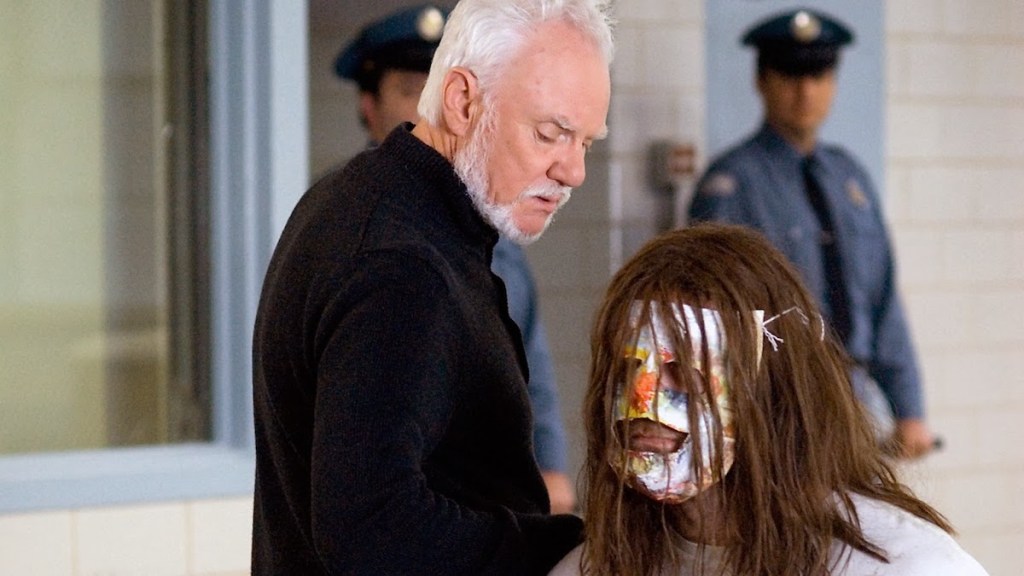
7. Halloween (2007)
After Halloween: Resurrection seemed to run the original timeline(s) into the ground, The Weinstein Company (ick) settled on the idea of just remaking the 1978 masterpiece while getting one of the hip new horror auteurs to slap his name on it. The result is Rob Zombie’s controversial and bizarre 2007 version of Halloween. Despised by many longtime fans for its demythologizing approach toward Michael Myers—who is essentially reimagined as a serial killer suffering from severe sociopathy among other personality disorders here—as well as Zombie’s undeniably trashy approach to characterization and dialogue, there are many detractors of this one. Yet we find quite a bit to like.
If you’re going to slaughter sacred cows and remake a classic—which everyone was doing in the horror genre in the 2000s—at least try to make it your own. Zombie definitely did that with a vision that is wholly not John Carpenter’s Halloween, but is pretty engrossing in its own right. This is most true during the movie’s extended first act where after brutally murdering his sister, her boyfriend, and even his stepfather, young Michael (Daeg Faerch) spirals in a mental asylum despite the best efforts of a much more empathetic Dr. Sam Loomis (Malcolm McDowell). No matter what the doc does, he can’t reach this boy, so he cashes in much to his shame by writing a true crime tell-all. Hence Loomis has a special obligation to Michael when his former patient escapes and the killings start again. And with adult Michael played by a towering Tyler Mane, the Shape hadn’t appeared this scary in decades; he’s an overpowering force of extreme violence. So extreme, in fact, that it’s still uncomfortable to watch.
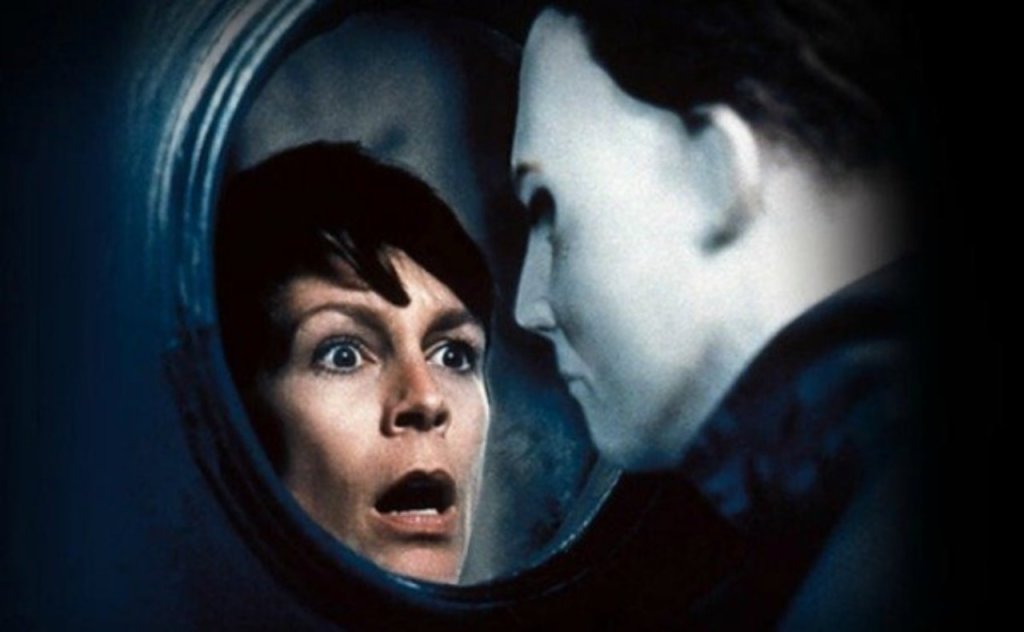
6. Halloween H20: 20 Years Later (1998)
Here is the first reboot in the Halloween franchise’s history. After paying Jamie Lee Curtis enough money to come back while still in the prime of her career, H20 effectively erased (or ignored) all the events between Halloween 4 and the disastrous Curse of Michael Myers. Instead we find a middle-aged and relatively content Laurie Strode working as a headmistress at a fancy boarding school where her teenage son (a young Josh Hartnett) cannot fathom why he isn’t allowed to celebrate Halloween. So this Samhain, he sneaks off with his girlfriend (a young Michelle Williams) to have a romantic evening while the rest of the school’s on a field trip.
But wouldn’t you know it, this is the same evening his long lost uncle decides to strike! Darn.The movie is based on a story idea by Kevin Williamson (screenwriter of the first two excellent Scream movies) and feels like it. Sadly, he didn’t actually write the script, which might explain why the film is a bit lethargic and lacks the snap and wit of those better ‘90s slasher movies. Still, Curtis is great, and her final showdown with Michael, which culminates with Laurie taking her big brother’s head off, is excellent. If David Gordon Green’s Halloween (2018) didn’t loosely revisit the same idea to better effect another 20 years later, H20 might’ve been higher on this list.
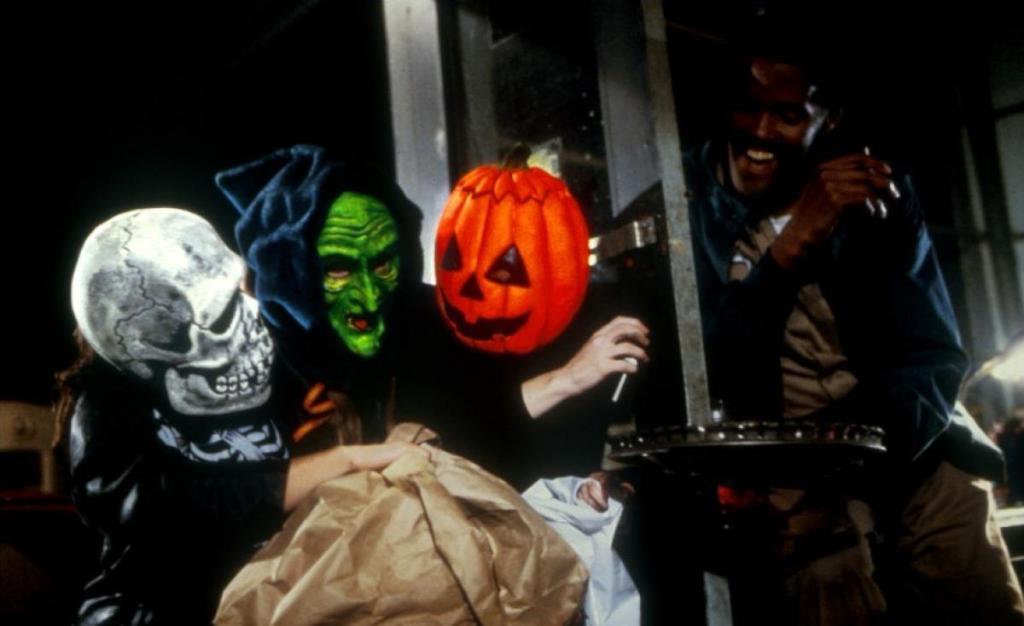
5. Halloween III: Season of the Witch (1982)
Once upon a time, Halloween was not supposed to be a franchise about Michael Myers. John Carpenter originally imagined it as a potential anthology series, with each film being a different proverbial ghost story set on All Hallows’ Eve. And after he killed off Michael Myers in 1981’s Halloween II, the filmmaker’s original brilliant idea got one movie to shine: Season of the Witch. The flick was rejected in its time by teen audiences who were flabbergasted by the lack of Michael, kitchen knives, or stabbings. But Season of the Witch has held up as a genuine cult classic nearly 40 years on.
Buoyed by the amusingly catchy “Happy Halloween from Silver Shamrock” song, the film centers on an evil coven of witches that has ascended to ‘80s corporate America and is using that little ditty in commercials to convince the youth of America to wear special Halloween masks—each with a microchip and piece of Stonehenge rock that will be used to sacrifice their bodies to the pagan gods of old and bring the Age of Witchcraft back! It’s batty, fun stuff and it’s a shame we never got more of it.
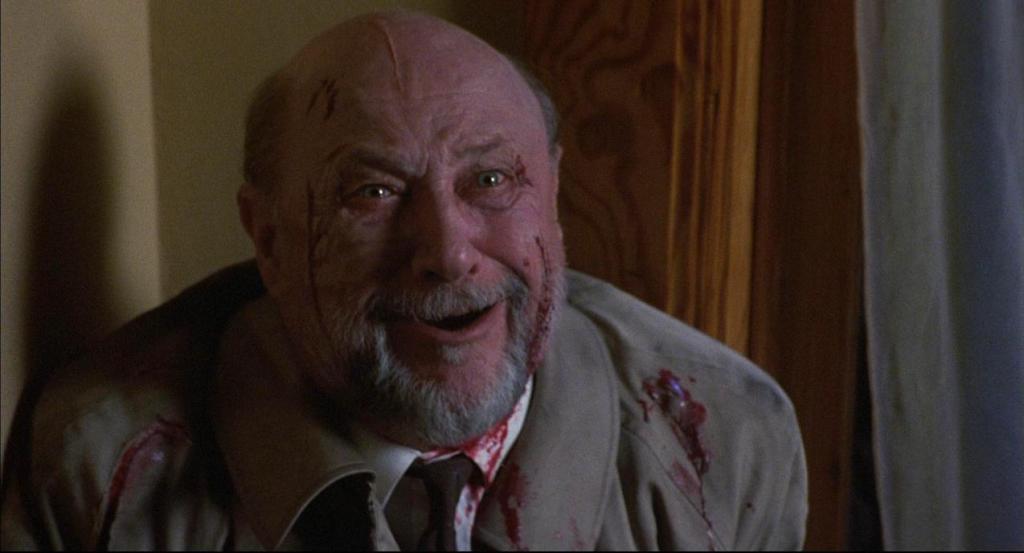
4. Halloween 4: The Return of Michael Myers (1988)
Halloween III showed the potential of what Halloween could become, and Halloween 4 showed what it would end up settling for over the next several decades. There is a lot more creativity and originality in the former, but if we’re being honest, Halloween 4 was just more fun. Realizing he was missing out, as Friday the 13th ripped off his franchise to greater year-in, year-out B-movie success, producer Moustapha Akkad greenlit this “me too” version of Michael Myers that belatedly jumped on the ‘80s slasher movie bandwagon, minus Carpenter or Hill’s high-minded intentions. Still, we’d take Halloween 4 over any Jason movie!
With Jamie Lee Curtis not returning, we pick up 10 years after the last movie and discover Laurie died in a car crash, but she left behind an orphaned and precocious daughter named Jamie Lloyd. Played endearingly by a young Danielle Harris—who after starring in two of the original canon’s films, plus Rob Zombie’s remakes, is a fan favorite—Jamie Lloyd makes a compelling protagonist because she’s so defenseless against Michael, particularly the first time out. Meanwhile Ellie Cornell provides a serviceable stand-in for Curtis as the teen heroine and put-upon older sister. And Donald Pleasence is on hand to deliver the ham, bacon, and a full English breakfast with his deliciously histrionic performance. The scene at the end where he discovers Jamie Lloyd has followed her uncle on the path of incomprehensible evil is still one of the best moments in any Halloween movie. Pity that the series didn’t follow up on it.
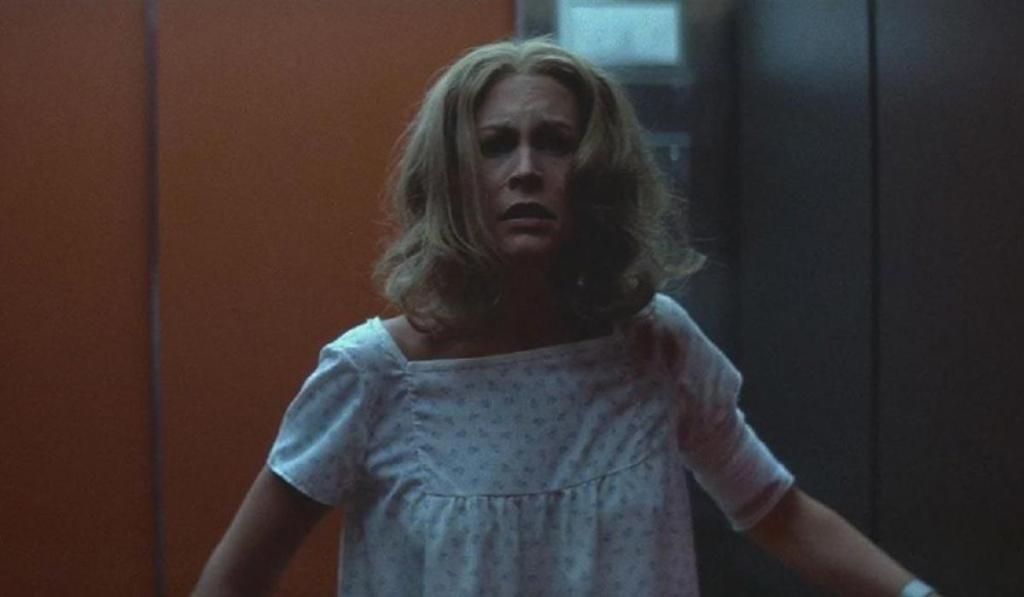
3. Halloween II (1981)
It’s almost a shame that a nearly perfect genre exercise like the original Halloween was successful enough to warrant the demand for a sequel, but here we are, 12 films later, and it all started with Halloween II (the first one). Written by Carpenter and Hill, and directed by Rick Rosenthal, Halloween II is clearly its predecessor’s offspring. Its narrative is as simple as ever, and Rosenthal is actually able to elicit quite a bit of suspense and terror out of large stretches of the film’s running time.
Picking up right where the original left off, Halloween II finds a relentless Michael heading for the hospital where poor Laurie (Curtis, just as effective as in the first film) has been taken, leaving a trail of bodies in his wake. In a twist worthy of Return of the Jedi, we discover that Laurie is actually Michael’s younger sister, sowing the seeds of a mythology that would be contorted and knotted over the course of several more sequels. Halloween II isn’t bad; it’s just gorier and contrived and, in the end, pointless.
Still, it had a fitting ending to Michael’s story if they had stopped here.
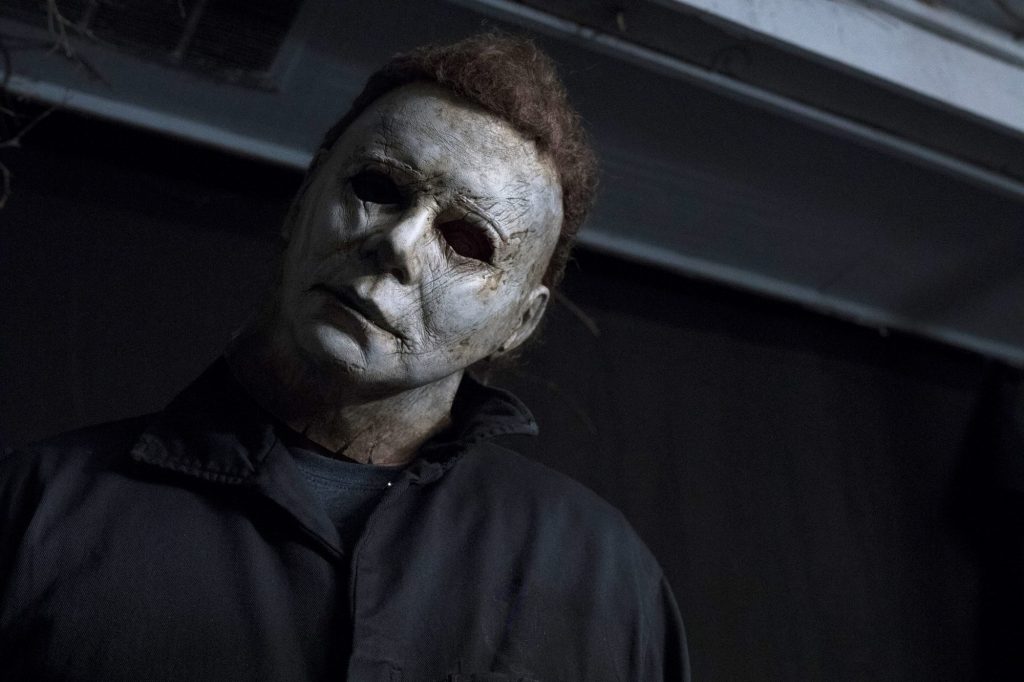
2. Halloween (2018)
For the first time in the series’ history, Halloween (2018) felt like a real auteur was attempting to honor Carpenter and Hill’s original movie with a direct sequel. And in spite of his confusing title, filmmaker David Gordon Green mostly succeeded by going so far back to the source that he jettisoned the entire mythology built up around Michael Myers in all the other movies—including the twist from Halloween II that Michael was actually Laurie Strode’s long lost brother. In Green’s legacy sequel, Michael is instead returned to his purest form: the living incarnation of needless, merciless evil unleashed on the world at random.
The approach also gives Jamie Lee Curtis a lot more to do than she had in the similar 1998 reboot since her Laurie Strode is much more proactive here. This Laurie has grown up and grown old, turning into an isolated survivalist and pariah in her community after 40 years of trauma. Even her adult daughter (Judy Greer) and granddaughter (Andi Matichak) keep her at arm’s length. The whole movie thus builds in anticipation of a now fairly predatory Laurie standing face-to-face against her original stalker and taking him down. And the ending where all three generations of Strode women exact a terrible vengeance on Michael is so good. The series could’ve happily stopped there—and it probably should have.
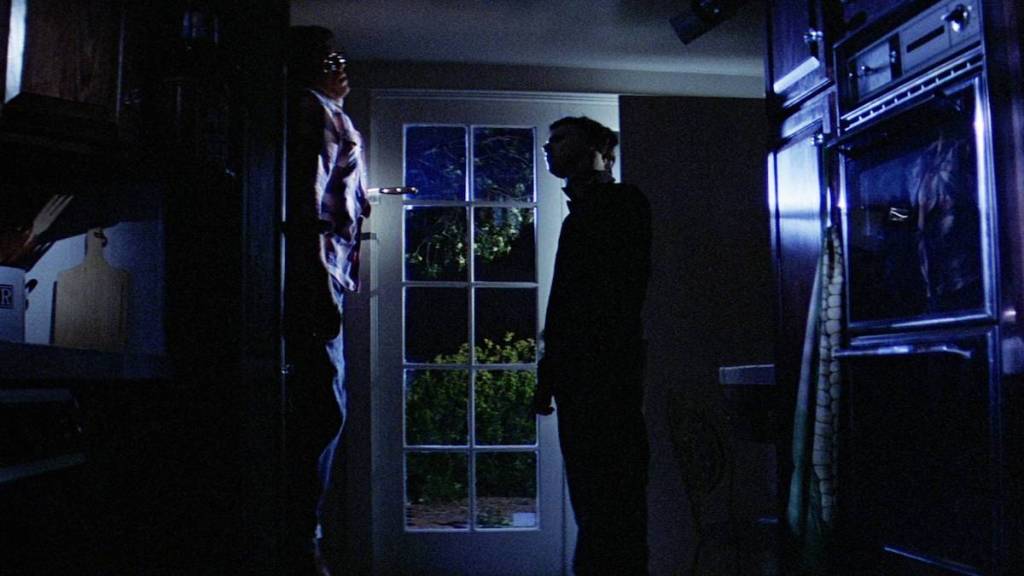
1. Halloween (1978)
The original is of course still the best. Where to begin, what to say about this movie that has not been said a thousand times before? Some 15 years after being incarcerated in a sanitarium for the seemingly motiveless murder of his sister, Michael Myers escapes and returns to his hometown of Haddonfield, Illinois on Halloween night, bent on more random slaughter. From that simple synopsis, and with the committed performance of Jamie Lee Curtis as the original “final girl,” Laurie Strode, the stuff of nightmares was woven. Director John Carpenter and co-writer Debra Hill turned their villainous Myers into “the Shape,” a living embodiment of evil that needs no reason to kill and apparently cannot be killed either.
When one watches Halloween now, it’s always striking just how spare and almost elegant it is. From the still-haunting score to the concise narrative, to Carpenter’s seemingly effortless use of shadow, light, and perspective to create scenes of almost unbearable tension, this is as well-oiled a machine as a horror film can be, with not a frame of film wasted or misused. And with that final, terrible shot of the empty patch of ground where Michael’s bullet-ridden body was lying a moment earlier, Carpenter also created a legend, a modern folktale that has become a permanent, still-frightening part of the culture.
